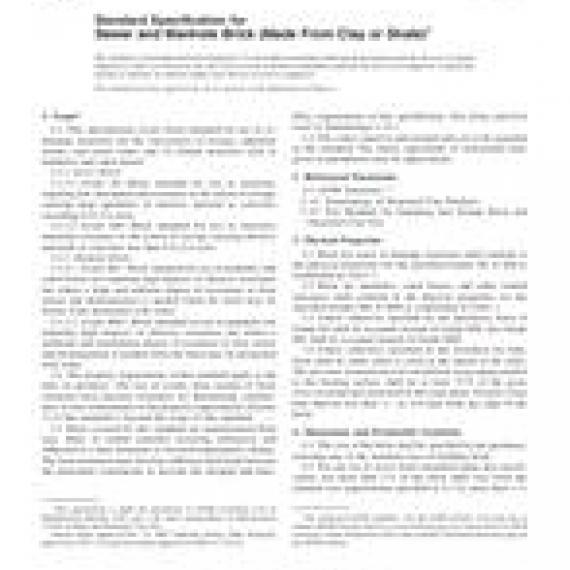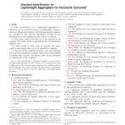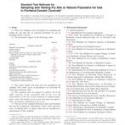No products
ASTM C32-05
ASTM C32-05 Standard Specification for Sewer and Manhole Brick (Made From Clay or Shale)
standard by ASTM International, 12/15/2005
Full Description
1.1 This specification covers brick intended for use in (1) drainage structures for the conveyance of sewage, industrial wastes, and storm water, and (2) related structures such as manholes and catch basins.
1.1.1 Sewer BrickGrade SS - Brick intended for use in structures requiring low absorption and resistance to the action of sewage carrying large quantities of abrasive material at velocities exceeding 8 ft (2.4 m)/s.
1.1.1.2 Grade SM - Brick intended for use in structures requiring resistance to the action of sewage carrying abrasive materials at velocities less than 8 ft (2.4 m)/s.
1.1.2 Manhole Brick:
1.1.2.1 Grade MS - Brick intended for use in manholes and catch basins not requiring high degrees of abrasive resistance but where a high and uniform degree of resistance to frost action and disintegration is needed when the brick may be frozen when permeated with water.
1.1.2.2. Grade MM - Brick intended for use in manholes not requiring high degrees of abrasive resistance but where a moderate and nonuniform degree of resistance to frost action and disintegration is needed when the brick may be permeated with water.
1.2 The property requirements of this standard apply at the time of purchase. The use of results from testing of brick extracted from masonry structures for determining conformance or non-conformance to the property requirements (Section ) of this standard is beyond the scope of this standard.
1.3 Brick covered by this standard are manufactured from clay, shale, or similar naturally occurring substances and subjected to a heat treatment at elevated temperatures (firing). The heat treatment must develop sufficient fired bond between the particulate constituents to provide the strength and durability requirements of this specification. (See firing and fired bond in Terminology C 43.)
1.4 The values stated in inch-pound units are to be regarded as the standard. The metric equivalents of inch-pound units given in parentheses may be approximate.


































